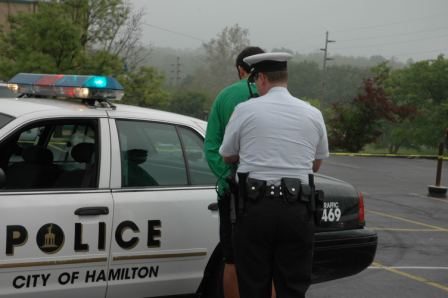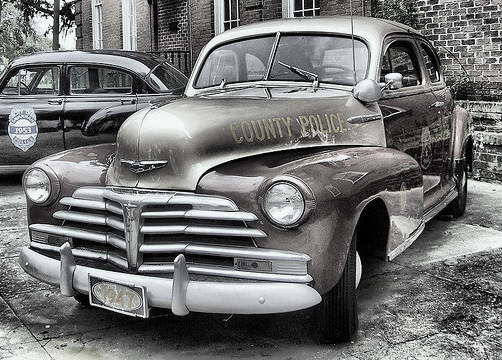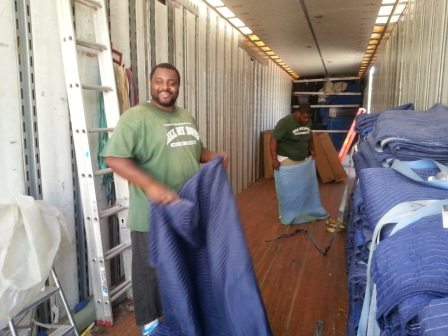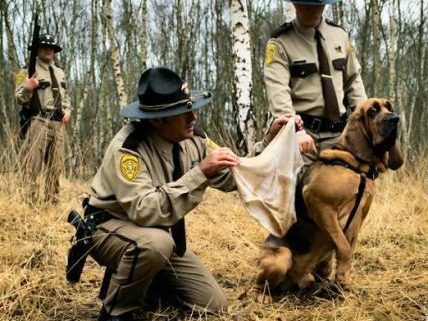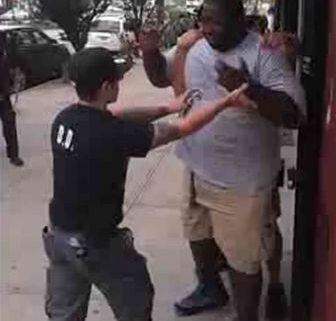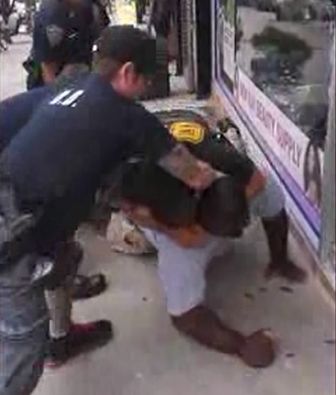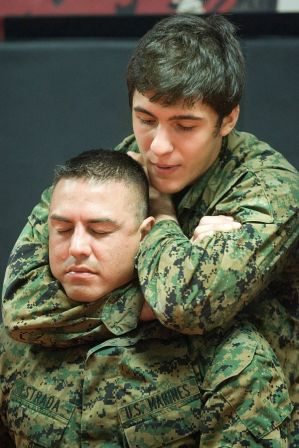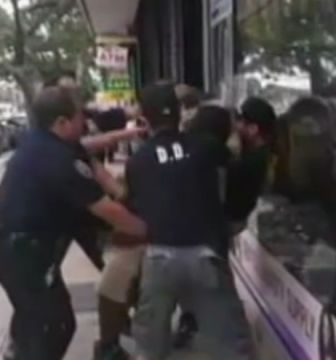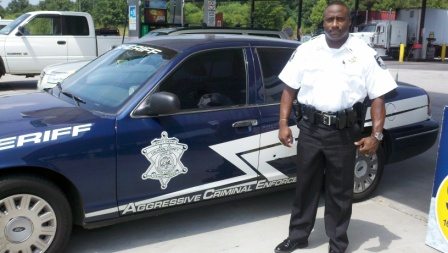When we think of U.S. cities with high murder rates, Detroit, Los Angeles, New York City, and Chicago come to mind. In fact, Chicago has seen more than it’s fair share of senseless killings over the past few years. But a new town has surpassed the windy city’s rate of bloody violence —Savannah, Georgia.
Yes, Savannah, the southern tourist city that’s known for its Spanish moss, ghosts of the civil war, Johnny Mercer, carriage rides, River Street, Paula Deen the butter queen, and “that book,” sees three times as many shootings (per capita) as Chicago. In fact, just yesterday there was a triple shooting in Savannah, the 15th shooting within a two week span.
Savannah’s violence isn’t limited to a particular area. Not at all. Homicides have occurred within walking distance to Armstrong State University, in the tourist and historic district, downtown, midtown, near the front doors of businesses, in the shopping districts, local parks, and in various residential neighborhoods throughout the city.
What, or who’s to blame for Savannah’s bloodshed?
Well, theories about it are like skeletons…every human has one. But there may be an underlying factor that should be addressed. First, though, let’s examine the comment made yesterday to WTOC news by Savannah-Chatham police spokesperson Julian Miller. Miller said, “Obviously, everybody’s concerned about this, and it kind of shows what is going on, not just this community, but nationwide and worldwide, and this isn’t something that a police department can solve on its own, this is something the entire community’s got to work with.”
I agree with Mr. Miller in that solving and reducing crime often does take the cooperation of police, city leaders, and community residents. However, if police want the assistance of the general public, the public must trust the members of their police department, from the chief all the way down to the newest officer on the streets. The same is true for city officials. Citizens must feel that city leaders are doing all they can to help their community, and that the community’s best interests are behind every action taken.
In addition, for a police agency to succeed, rank and file employees must also trust their leaders, including civilian city officials—mayor, city manager, etc. When that trust fails, respect for administration becomes nonexistent. And, with trust and respect circling the bottom of the toilet, the performance of police officers and civilian staff suffers greatly.
Police supervisors are often caught between the desires and orders of the “brass” and the decisions and orders they dole out to their own subordinates.
Line officers and ranking officials alike begin to dread coming to work. Employees soon begin to “talk” about other employees. The rumor mill gathers strength. Workers don’t feel secure in their jobs. They have to worry about what they say and who they say it to. It’s just downright unpleasant. And, unfortunately, this dark cloud of uncertainty, backbiting, and mistrust pours out into the streets, leaving citizens not trusting anyone wearing a badge and gun. After all, if they don’t trust one another, then why should the public trust them?
And that’s the situation in Savannah, Ga.—a good deal of the community absolutely does not trust its police department. Sadly, that level of mistrust has been earned by the SCMPD. Why? Well, for starters (the list is long so I’ve picked only a few points)…
– Police Chief Willie Lovett was accused of having an affair with a female detective. She and her husband filed official complaints. Shortly after the allegation was made public, Chief Lovett abruptly resigned/retired. Then, following a federal investigation, a bombshell fell on the community. Lovett was indicted on 7 federal charges, including extortion, participating in an illegal gambling operation, and conspiring to obstruct the enforcement of state criminal laws. Allegedly, he used the power of his office to conceal a gambling operation, and he was paid to do so.
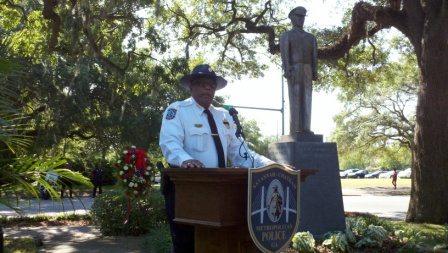
Former SCMPD police chief Willie Lovett
– A high ranking police official was accused of helping Lovett conceal his affair with a female employee.
– Lovett gave police badges to two of his friends, both civilian car dealers. One of the men flashed his badge to an officer who stopped him for driving under the influence.
– At least 14 former officers are gearing up to sue the city of Savannah, claiming sexual harassment, corruption, and retaliation.
– 16 SCMPD officers have been accused of sexual harassment.
– SCMPD was investigated for criminal allegations by the Georgia Bureau of Investigation – undermining fellow officers, cover up, and more.
– MDBI International, a Virginia-based private investigation firm, determined that SCMPD Internal Affairs investigations were “inadequate and unprofessional”. The investigation involved two SCMPD officers who were involved in alerting potential drug dealers that their phones were being tapped by police. The two internal affairs investigators who prepared and presented the report about the officers involved in the crime were suddenly transferred back to patrol, working with the two men they’d investigated.
– Officers have been (allegedly) caught breaking the law but were not charged, nor were they suspended from duty.
– SCMPD turnover rate is extremely high—over two dozen officers have recently resigned, bringing the total to 51 officers resigning in 2014. Seventy-six have quit within the past five years. The front door to the department is practically a revolving door, with new officers meeting those who’ve quit on their way out.
Anyway, this list is extremely long, but I’m sure you can see why the public can’t seem to muster respect for a department whose employees don’t respect the job or the meaning of the badge and their oath.
But the troubles don’t stop with the men and women in uniform. Take the incident where a SCMPD officer stopped a Porsche 911 Turbo for speeding—70 in a 40mph zone. The driver of the car also had a suspended drivers license. The officer issued citations for the speed violation and for driving on a suspended license. He also took possession of the drivers license. A short time later the officer was called into his captain’s office and was informed that the driver of the Porsche was the son of Savannah mayor Edna Jackson. The captain then ordered the officer to return the confiscated drivers license. In addition, the two traffic tickets never found their way to court. They’d somehow “magically” disappeared.
And then there’s Officer Frank Andrew Reteguiz who recently resigned from the SCMPD, but not before sending a copy of his resignation letter his 609 fellow employees (a copy of his message and resignation letter are below, and they are interesting).
In 2013, Reteguiz stopped a vehicle for an offense. As he approached the car the driver bolted out of his car, heading toward the officer. At that point Reteguiz did not know the man, and he felt threatened, so he pulled his service weapon from its holster and kept it pointed at the ground. The man then announced to the officer that he was the husband of Savannah city manager, Stephanie Cutter (Cutter was was appointed to her position by Mayor Jackson. She was since hired permanently by the full Savannah administration). Officer Reteguiz issued a summons to Cutter’s husband for a seat belt violation, a charge that was later dismissed. Reteguiz then filed a complaint with Savannah’s Human Resources Department, but it too, was dismissed by a private attorney, a lawyer who was hired by the city.
Even Chatham County is contemplating distancing themselves from the SCMPD by ditching the city police department in favor of establishing their own law enforcement agency to patrol the unincorporated areas.
So, is there any wonder why criminals have no respect/fear of the law in Savannah, when many of the law enforcement officers there don’t respect one another? And the bad guys aren’t too worried about getting caught because they know the local officers are too busy keeping an eye on their brothers and sisters in blue, and/or filling out job applications with other departments.
The SCMPD is a department that’s out of control, and the only way to fix the troubles, I fear, is to “clean house,” starting at the top of the chain. After all, problems generally cannot be solved by the people who cause them.
Personally, I suggest vacationing in other, safer destinations. Unless, of course, Kevlar is part of your vacation attire…
Finally, here are copies of Officer Frank Andrew Reteguiz’s email to his coworkers, and his resignation letter.

Frank Reteguiz speaking to WTOC news about his resignation from SCMPD
Reteguiz’s email to coworkers:
Farewell SCMPD,
Tonight was my last night working for the department and I wanted to say goodbye. I will miss most of you. I had a lot of people ask why I am leaving this past week; so to clarify why I am leaving, below is a copy of my Two Weeks Notice that I had submitted. It’s pretty good reading. Also, I wrote a book called “How to Fail at Dating”. It will be available by next week.
“The only thing necessary for the triumph of evil is that good men do nothing.”- Edmund Burke
Good Luck,
Frank Reteguiz
Reteguiz Letter of Resignation
07/06/2014
To Whom It May Concern,
I, Advanced Patrol Officer Frank Andrew Reteguiz, hereby give my two weeks’ notice with this letter of resignation.
I have chosen to leave SCMPD for several reasons: retaliation, lack of pay, and the no opportunity for advancement. First, due the incident from last year involving myself, the City Manager’s husband and Internal Affairs, I have been informed that I am blackballed. Various members from inside the department and outside department have informed me that I would not move beyond patrol and I would have to leave to save my career. This is discouraging and heart-breaking news. I know now, based off this incident with Mr. Cutter, the one position I have aspired to do for most of my adult life, to work as a Detective, will never happen for me if I stay with this department. The reason for this is the toxic culture/politics that is still heavily embedded within the department and government.
When the City Manager’s husband jumped out of his car angry and aggressive, I did what I was trained to do for my safety and my partner’s safety. I followed the rules and my training, but I got punished.
When I am on patrol now I have to live with the fear I might be punished for defending myself or my partner. I don’t know if I can trust SCMPD will support me when I respond based off of my training and judgment. This concern could cause me to hesitate or fail to respond to a threat with the training that has become second nature. I might get killed, or my partner might get killed, because I don’t know if I can trust my training.
I can’t keep living the way I have these past months. I have been forced to see a counselor and take medication based off of this incident and the response of the SCMPD. I don’t want to stay medicated in order to deal with the stress and anxiety this incident has brought into my life. No officer should have to worry about being punished for doing the right thing.
The second reason for my resignation is the lack of pay. Recently the city boasted on giving city workers a Cost of Living increase (the first in several years) and it was mistaken as a raise. A raise is an incentive used to reward exceptional work, maintain employee satisfaction and to deter attrition. A raise is used to give recognition and a reason for employees with knowledge and experience to stay with an organization. A cost-of-living increase is something an organization does to all its employees to help keep up with inflation and the increase of cost to sustain a living.
Many officers have to work many off-duty jobs and overtime assignments to make ends meet. All the extra hours of work takes away from spending time from family and increases the likelihood of injury, due to exhaustion from working those hours.
The third reason is that there is no opportunity for advancement in the department. The culture embedded with this department is inconsistency and unpredictability. There is no objective criteria used for advancement. Competent and honest officers are still constantly being passed up for positions and rank advancement because they may have irked someone because they did the right thing. There is also still unfair treatment within the department.
Officers are still being sent to Internal Affairs (a stressful and anxiety-invoking event) because a citizen who may have the Chief’s phone number, or knew a person in power and was not pleased with the outcome with the officer. These situations occur time and time again, even though the officer was right. This occurs while other officers who violated policies suffer no repercussions.
An example of this is the former Internal Affairs unit. Despite the humiliating reports, the multiple lawsuits and the arrest of former officers because they failed to do their jobs; these officers have only been transferred. They have suffered no other repercussions. It is demoralizing to work for a department retaining these officers while unfairly reprimanding other officers for committing minor policy violations.
It is broadcasted on the news that there has been improvement within the department. Sadly this is not the case. The changes made within this department have only been cosmetic in nature. There is still corruption in this department, and the people who have the power to stop it are still turning a blind eye. These people knew of the corruption that took place under Chief Lovett, but they stood by and did nothing. They boast about doing the right thing but they do not act on it when they were needed to take action. These are deplorable and abusive conditions that we have to work under and why I am resigning.
I cannot with good conscious keep working for SCMPD due to these reasons. I wish a real change would come to the department before you lose the honest officers who do make a difference.
Sincerely,
Frank Andrew Reteguiz”

